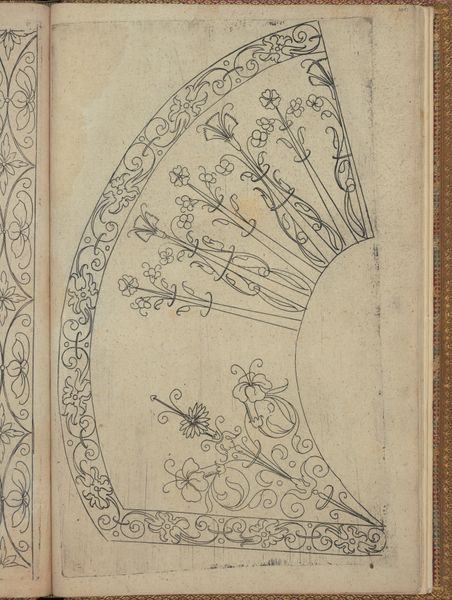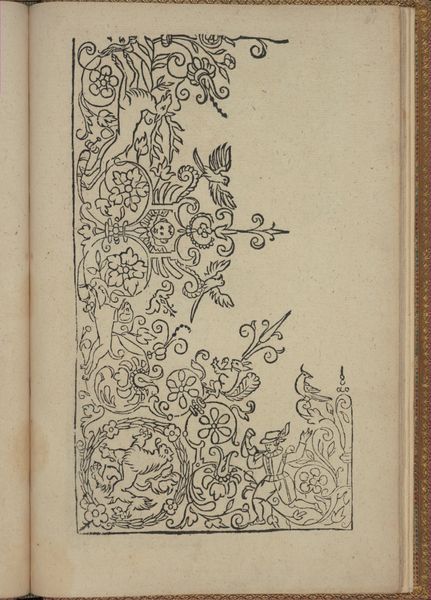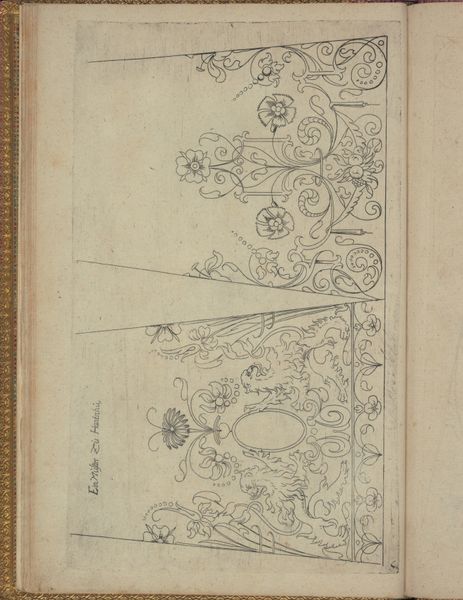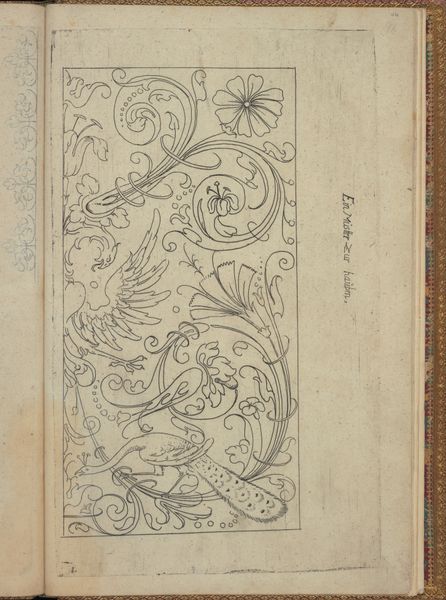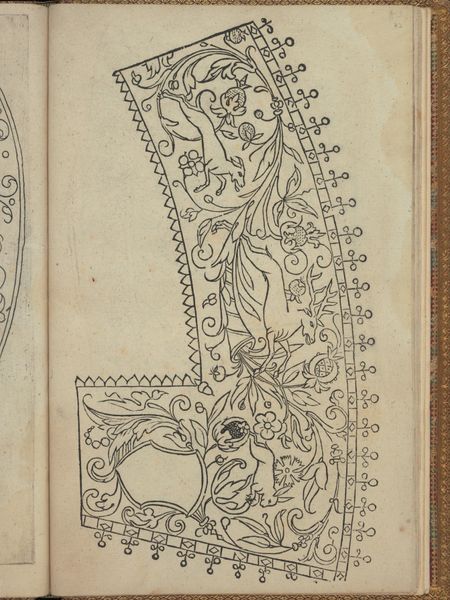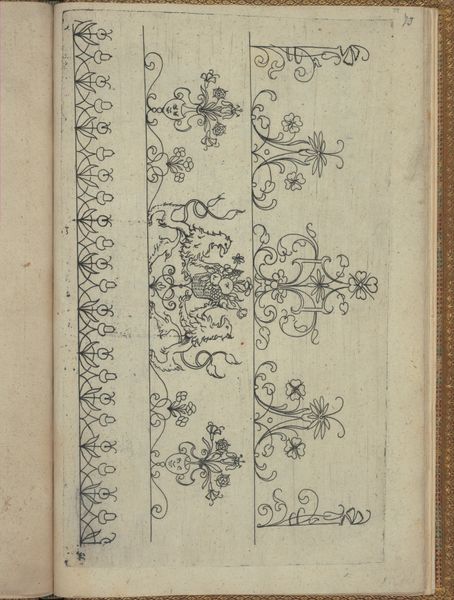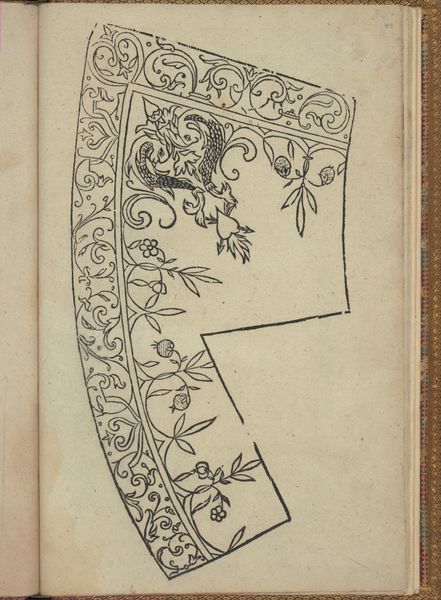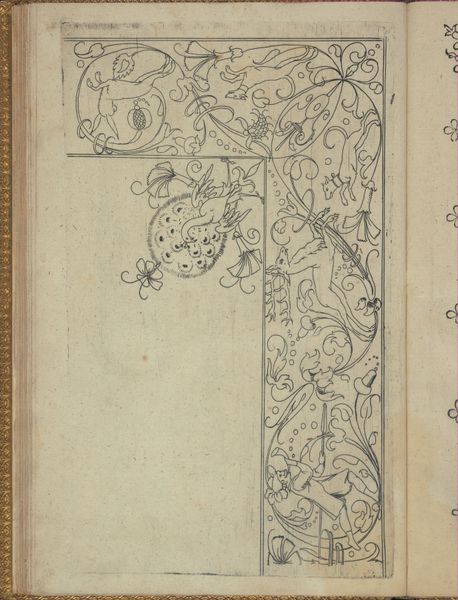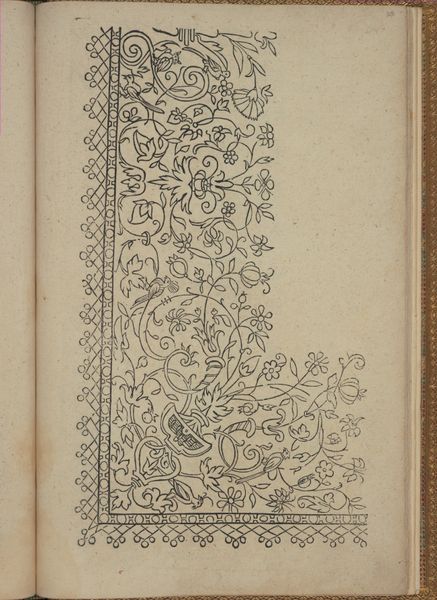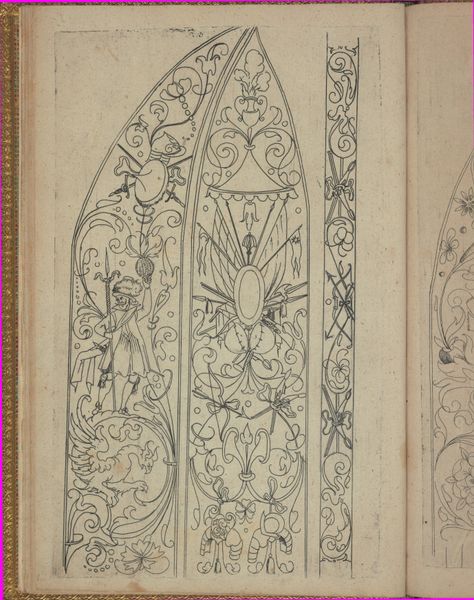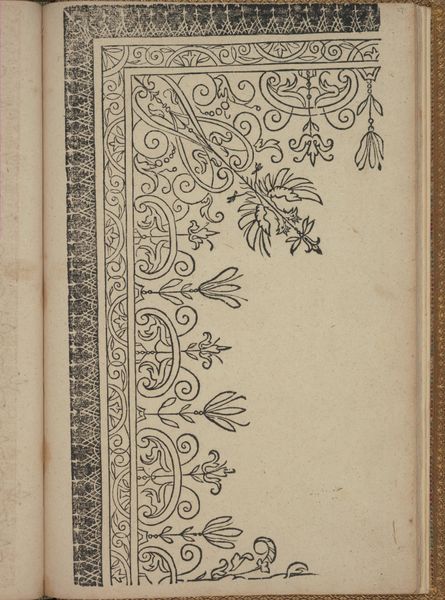
drawing, coloured-pencil, print
#
drawing
#
coloured-pencil
# print
#
book
#
11_renaissance
#
coloured pencil
Dimensions: Overall: 12 x 8 1/16 in. (30.5 x 20.5 cm)
Copyright: Public Domain
Editor: Here we have page 15v from Andreas Bretschneider’s “New Modelbüch,” made in 1615. It appears to be a drawing, likely for a print, and uses coloured pencil. It has a kind of whimsical quality to it; it looks almost like a textile design. What catches your eye about this page? Curator: I'm drawn to the material conditions of its production. This "Modelbüch" speaks volumes about the changing nature of labor in the 17th century. Think about who would have created this book, who would have used it, and how this object facilitated the exchange of artistic and artisanal ideas. Editor: That's interesting. I was mainly thinking about the aesthetic qualities, like the floral motifs. But you're making me consider its utility. How does looking at the material aspects change how we view its artistic merit? Curator: Precisely. The means of production were deeply tied to social structures. Who had access to colored pencils, to printmaking technologies? Whose labor was involved in creating these model books, and for what purpose? These aren't simply beautiful designs; they reflect patterns of patronage, the rise of skilled artisans, and perhaps the increasing commodification of artistic skill. Can we really separate these swirling floral designs from the economic system that allowed them to exist? Editor: So, it's not just about appreciating the craftsmanship, but also acknowledging the often unseen labor and social context that enabled that craftsmanship? Curator: Exactly. Examining the materiality and the process encourages us to think about the book not just as a piece of art but as a product of complex interactions within Renaissance society. It blurs the boundary between artistic inspiration and practical necessity. Editor: I see! Looking at the art in this way helps me better understand the period. Curator: Indeed, analyzing the material aspects gives insight into artistic practice.
Comments
No comments
Be the first to comment and join the conversation on the ultimate creative platform.
